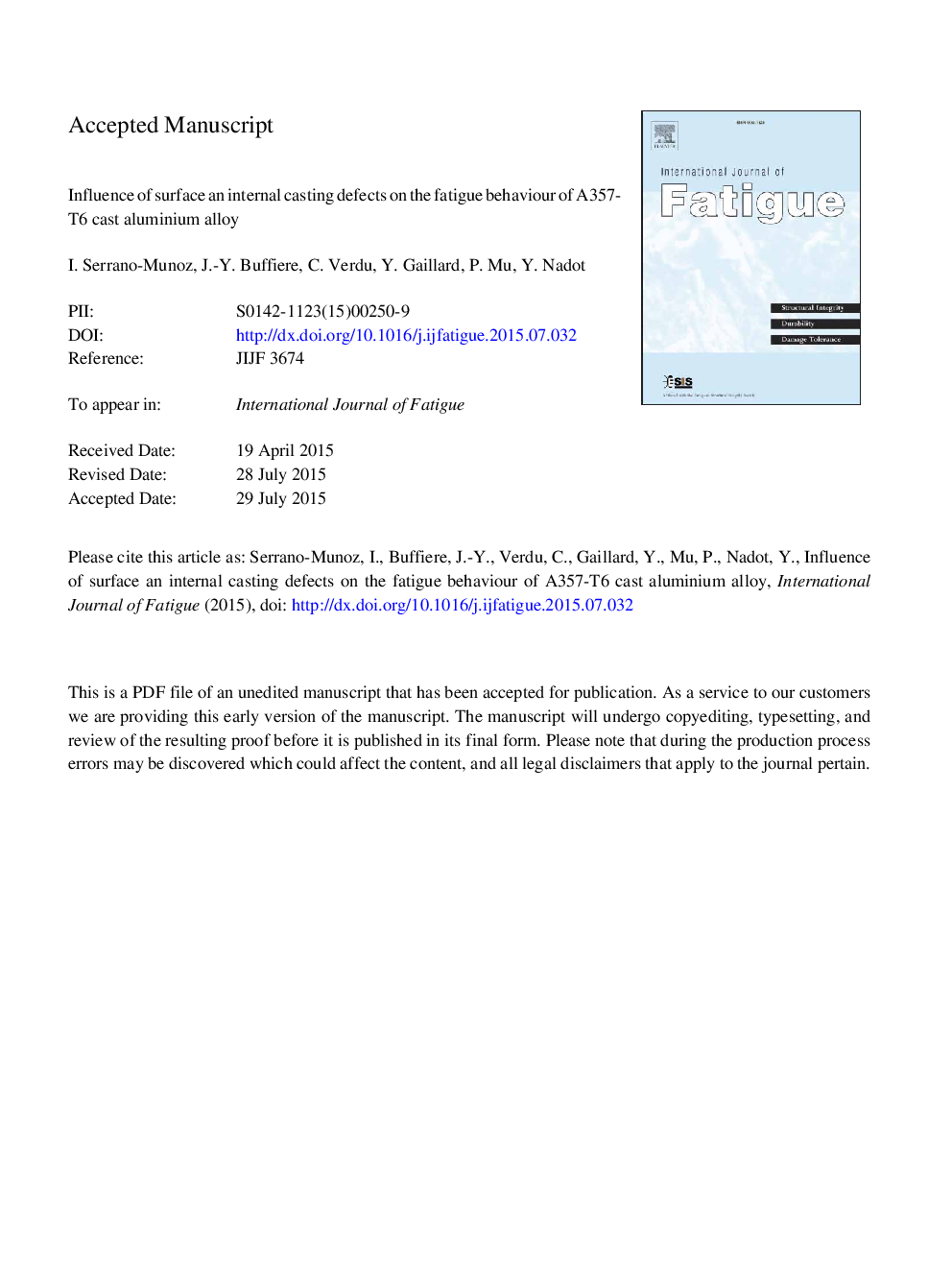| Article ID | Journal | Published Year | Pages | File Type |
|---|---|---|---|---|
| 7171768 | International Journal of Fatigue | 2016 | 22 Pages |
Abstract
The influence of internal casting defects on the fatigue properties of A357-T6 alloy has been studied. Specimens with artificial casting defects (â
eqâ2Â mm) placed at the surface or in the bulk have been produced. A reference S-N curve has been obtained for the material containing only natural defects (microshrinkages). Cycling has been performed in air or under vacuum. In spite of their relatively large size, the internal artificial defects do not induce a reduction of the fatigue life compared to the reference material. When the artificial defects are placed at the surface, a decrease is observed when the specimens are cycled in air but it disappears again when cycling is performed in vacuum conditions. The detrimental effect of the casting defects is discussed in relation to their ability to initiate a crack growing in vacuum or not. It can be concluded that the increased fatigue lives observed for internal defects are the consequence of slower crack initiation and propagation mechanism occurring in vacuum.
Related Topics
Physical Sciences and Engineering
Engineering
Mechanical Engineering
Authors
I. Serrano-Munoz, J.-Y. Buffiere, C. Verdu, Y. Gaillard, P. Mu, Y. Nadot,
